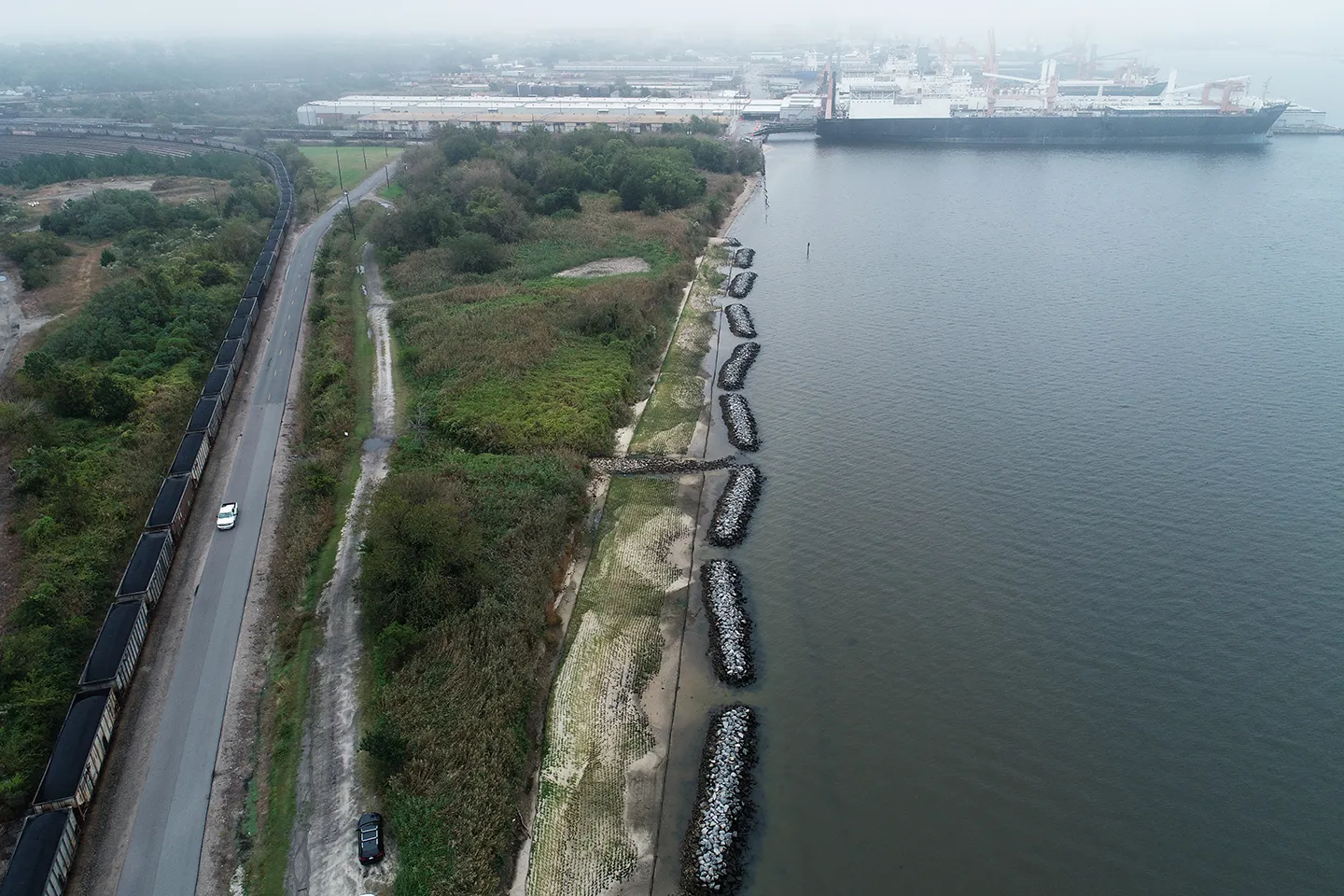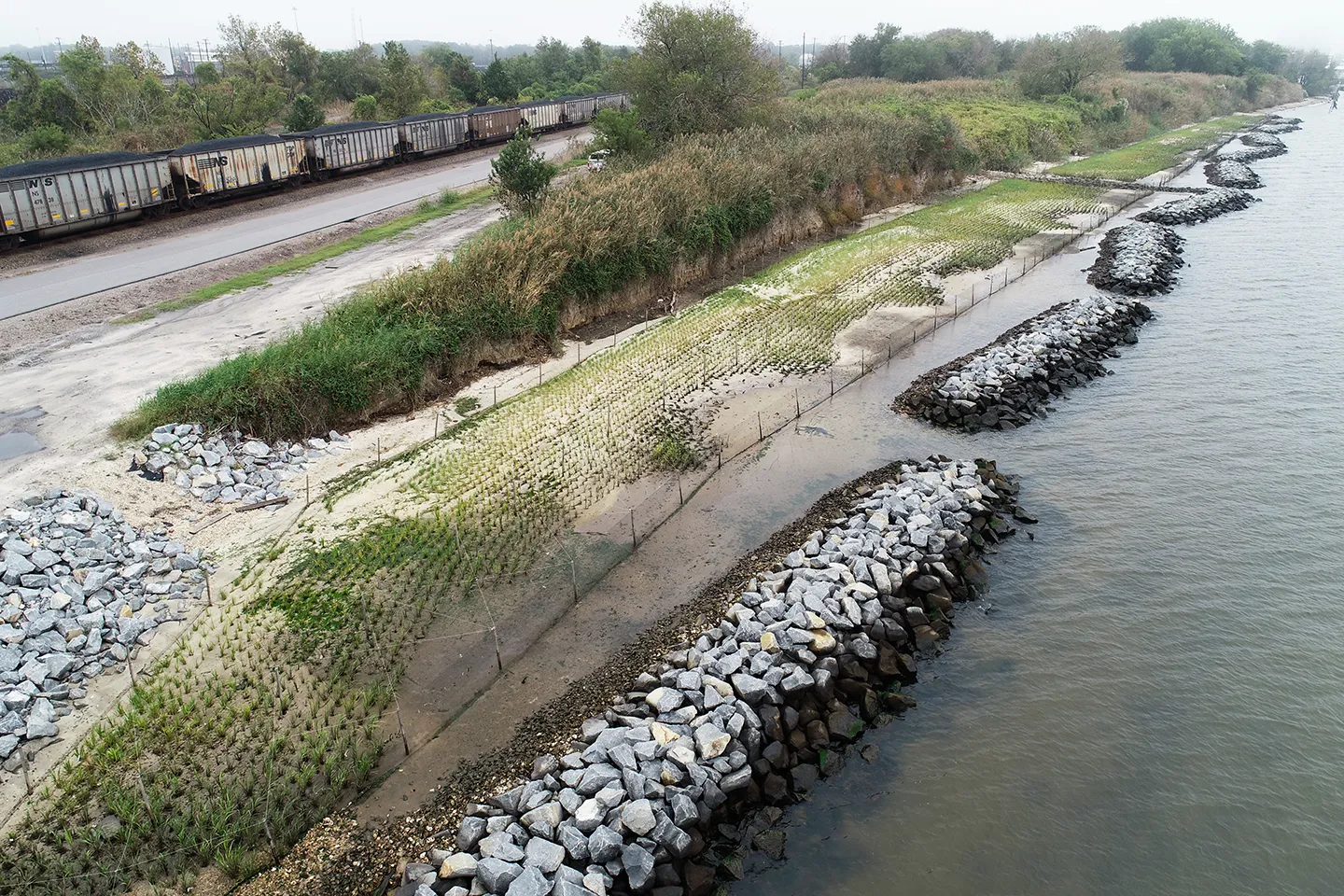The purpose of both Promoting Resilient Operations for Transformative, Efficient, and Cost-Saving Transportation (PROTECT) Formula and Discretionary Grant programs is to plan for and strengthen surface transportation to be more resilient to natural hazards, including climate change, sea level rise, flooding, extreme weather events, and other natural disasters through formula and competitive discretionary grants.
The Bipartisan Infrastructure Law (BIL) created both these programs within the Department of Transportation’s (DOT) Federal Highway Administration (FHWA). FHWA distributed PROTECT formula funding to state DOTs in August of 2022 and states are already using funds.
On April 21, 2023, the DOT opened the application period for PROTECT’s Discretionary Grant Program, allowing additional eligible recipients an opportunity to apply for PROTECT funding to make surface transportation more resilient through innovative approaches to natural risk reduction. In a previous blog, our team provided advice for agencies and project owners to prepare for the funding. Below, we hope to clarify additional distinctions between the formula funding and competitive grant opportunities as well as share some important recent developments.

Key Distinctions
Dollar Breakdown
A total of $8.7 billion has been allocated for both programs over five years, which has been divided into:
Source of Funding
PROTECT formula funding is money that went directly to state DOT agencies to spend on resilience measures associated with highway projects, public transportation facilities or services, or port facilities. State DOTs must follow FHWA guidance for spending requirements.
PROTECT Discretionary Grants (also known as competitive grants) Program will be given by FHWA based on funding applications they receive from interested and eligible applicants. FHWA will determine awardees and award size.
Amount of Money That Can Be Obtained
For formula funding, states received a certain allotment which will be distributed over five years.
For competitive grants, there is a minimum award of $100,000 or $500,000 depending on project type and no maximum award size.

In the Know: Competitive Grants
Additional PROTECT Competitive Grants Program Details
- Application period is open for fiscal year (FY) 2022 and 2023 funding and closes August 18, 2023. More information can be found on the FHWA PROTECT website. Notice of funding opportunity (NOFO) is found on the grants.gov site.
- FHWA has $848 million to spend for FY22 and FY23 for this specific program
- Applications must include benefit-cost analysis
- There will be additional rounds of funding for FY24 through FY26
- There is no applicant cost share or matching requirement
Funding Categories
- Planning grants, with up to $45 million available
- Resilience improvement grants, with up to $638 million available
- Community resilience and evacuation route grants, with up to $45 million available
- At-risk coastal infrastructure grants, with up to $120 million available
Summary of Eligible Applicants
- States
- Metropolitan planning organization (MPO)
- Local governments
- A special purpose district or public authority with a transportation function, including a port authority
- Native American tribes
- A federal land management agency may be eligible if the agency applies jointly with a state or group of states
- A multi-state or multijurisdictional group of entities
PROTECT’s Competitive Grants Program opens the pool of eligible applicants compared to formula funding which is only for state DOT usage.
Eligible Activities
FHWA is looking to fund projects that increase the resilience of surface transportation projects, meaning highways, ports, and public transportation, such as intercity passenger rail and buses. According to FHWA, projects should strengthen, stabilize, harden, elevate, relocate, or enhance the resilience of highway and non-rail infrastructure, such as bridges, roads, walkways, bicycle lanes, and associated infrastructure that protect highways, such as culverts and tide gates. FHWA suggests climate projects be innovative and collaborative and provide the example of nature-based solutions to reduce flood risks, erosion, heat impacts, and wave damage, which offers added benefits of habitat creation and pollutant removal.
Our firm supports transportation agencies across the country to incorporate resilience and sustainability in business practices, planning processes, design protocols, and maintenance and operations to enhance safety, protect and prolong the useful life of assets, and improve asset management for the future.
To stay up-to-date on PROTECT developments, visit DOT FHWA’s website.